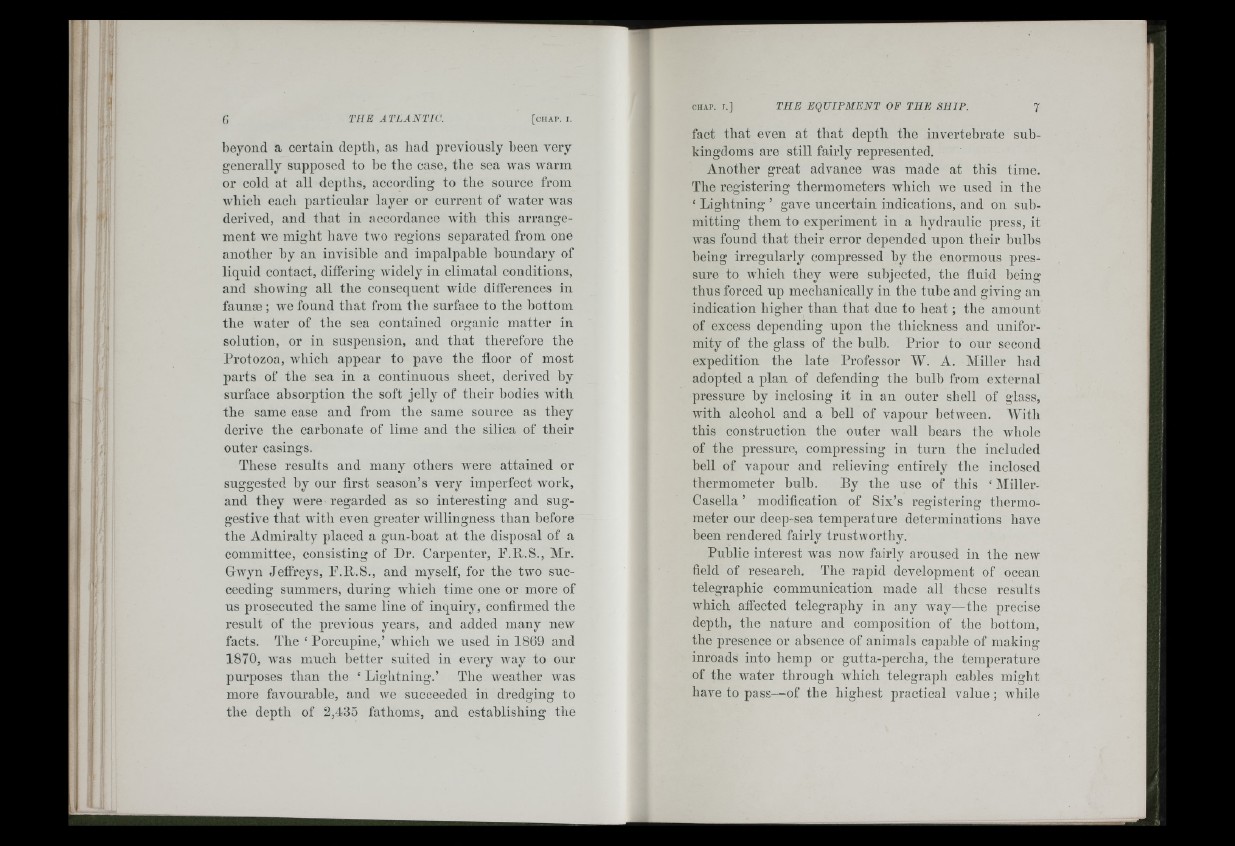
heyond a certain depth, as had previously heen very
generally supposed to he the case, the sea was warm
or cold at all depths, according to the source from
which each particular layer or current of W’ater wms
derived, and that in accordance wdtli this arrangement
we might have two regions separated from one
another hy an invisihle and impalpable boundary of
liquid contact, differing widely in climatal conditions,
and showing all the consequent wdde differences in
faunae ; we found that from the surface to the hottom
the water of the sea contained organic matter in
solution, or in suspension, and tliat therefore the
Protozoa, wliicli appear to pave the floor of most
parts of the sea in a continuous sheet, derived hy
surface absorption the soft jelly of their bodies wutii
the same ease and from the same source as they
derive the carbonate of lime and the silica of their
outer casings.
These results and many others were attained or
suggested by our first season’s very imperfect work,
and they were regarded as so interesting and suggestive
that wdth even greater willingness than before
the Admiralty placed a gun-hoat at the disposal of a
committee, consisting of Dr. Carpenter, D.R.S., Mr.
Gavvui Jeffreys, D.R.S., and myself, for the two succeeding
summers, during which time one or more of
us prosecuted the same line of inquiry, confirmed the
result of the previous years, and added many new
facts. The ‘ Porcupine,’ which w’e used in 1869 and
1870, was much better suited in every way to our
purposes than the ‘ Lightning.’ The Aveather Avas
more favourable, and aa’c succeeded in dredging to
the depth of 2,435 fathoms, and establishing the
fact that even at that depth the invertebrate subkingdoms
are still fairly represented.
Another great advance was made at this time.
The registering thermometers which Ave used in the
‘ Lightning ’ gave uncertain indications, and on submitting
them to experiment in a hydraulic press, it
Avas found that their error depended upon their bulbs
being irregularly compressed by the enormous pressure
to Avliich they were subjected, the fluid being
thus forced up mechanically in the tube and giving an
indication higher than that due to h ea t; the amount
of excess depending upon the thickness and uniformity
of the glass of the bulb. Prior to our second
expedition the late Professor W. A. Aliller had
adopted a plan of defending the bulb from external
pressure hy inclosing it in an outer shell of glass,
with alcohol and a bell of vapour between. Witii
this construction the outer Avail hears the Avhole
of the pressure, compressing in turn the included
hell of vapour and relieving entirely the inclosed
thermometer bulb. By the use of this ‘ Miller-
Casella ’ modification of Six’s registering thermometer
our deep-sea temperature determinations have
been rendered fairly trustworthy.
Public interest was noAv fairly aroused in the ncAv
field of research. The rapid development of ocean
telegraphic communication made all these results
which affected telegraphy in any Avay—the precise
depth, the nature and composition of the hottom,
the presence or absence of animals capable of making
inroads into hemp or gutta-percha, the temperature
of the Avater through wffiich telegraph cables might
have to pass—of the highest practical value; while